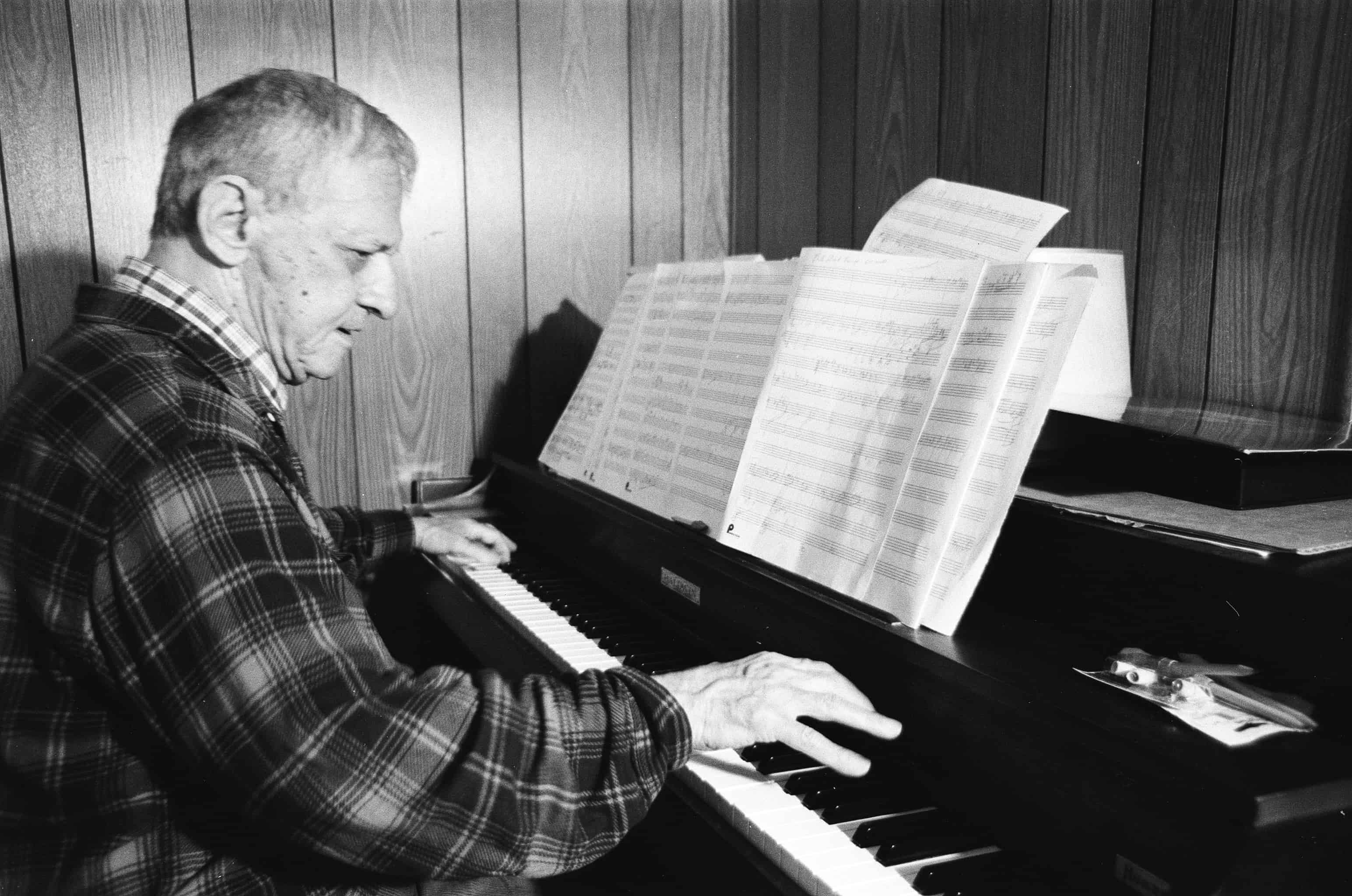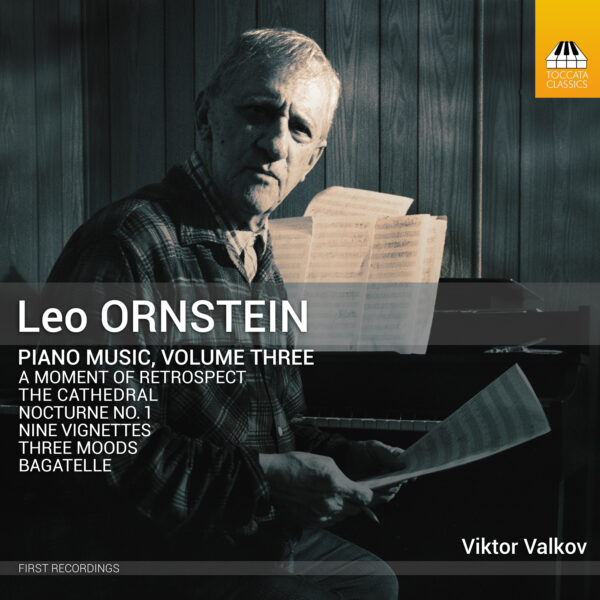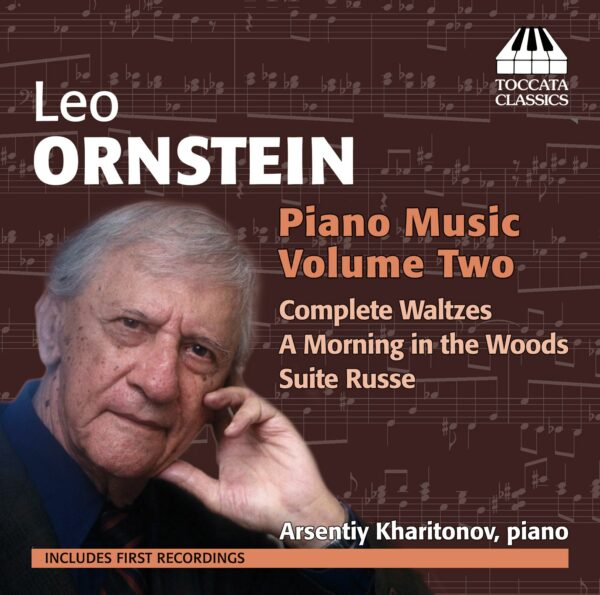As the Bulgarian-born Viktor Valkov picks up the baton of Leo Ornstein’s piano music from Arsentiy Kharitonov with a third volume from Toccata Classics, the composer’s son, Severo, reflects on how he rescued his father’s music from confinement in the family archive.
I was born in 1930, just as my father, Leo Ornstein, was ending what had been a dramatic public career as a pianist and purveyor of modern music – both his own and that of many now well-known composers. In his concerts he introduced American audiences, often for the first time, to individuals such as Maurice Ravel, Isaac Albéniz, César Franck, Béla Bartók, Arnold Schoenberg and Cyril Scott. At that time these men were essentially unknown figures on the American music scene, and my father had played an important part in bringing attention to their music as well as his own. I was, of course, blissfully unaware of this history and of the fact that, even as I came along, he had turned the music world, particularly in America, on its ear, but was now turning his back on that highly public life and retreating into private seclusion and a deliberate obscurity. How could a child know or care about such matters? I knew him only as my father – a warm and intense figure who often tucked me and my sister into bed at night and sang us special songs that he made up for each of us.
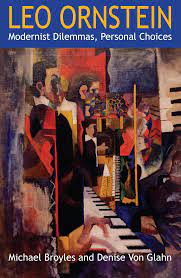
Because he had a significant and influential impact on the evolving early twentieth-century music scene, particularly in America, two biographies have been written. The first, appearing when he was only 26 years old, explored his musical work and influence up to that time.1 Many of the works mentioned in that book have been lost but have been replaced by a large number of later works. A much larger study, written close to the end of his life, when he was aged 108, is a more complete review of his life, œuvre and influence.2 Since these biographies give a thorough review of the man and his work, I don’t intend to rehash that material here. Instead, my purpose is to present the man and his music-making as seen through the eyes of his son, an intimate observer who, late in life, became the ‘publisher’ of his music and its enthusiastic promoter.
From the cradle onwards I was steeped in the sounds of the piano since my father, despite retirement from performing, continued to practise many hours each day. Without realising it, I was becoming familiar with large swathes of the world’s piano literature. Initially, his constant practising was in preparation for the few remaining public performances he would give, but long after his last appearance, the practising continued largely unabated. Nominally, this dedication kept him in shape to stay ahead of his students as he morphed from performer to teacher, but that by itself would not have necessitated such intense practice. Many years later it occurred to me to ask him why he had continued so many hours of practice, but as I recall he did not have a good answer. I suspect that two things were at work. First of all, there was the sheer habit of a lifetime. A relatively small and tight hand requires excessive practising to master reaches that a larger hand could more easily span. Some reaches needed to be broken, and the speed that could help to mask the break required agility that could be achieved only by inordinate practice. Thus it became a habit and like many habits, persisted long after its purpose had evaporated. Second, although he complained about being ‘chained to the piano’, I believe that he nonetheless got satisfaction from rendering the music precisely as he thought it should be played. At one point, in showing me a fingering in the Chopin A flat Impromptu, he indicated relish in the physical way the passage felt under the hand.
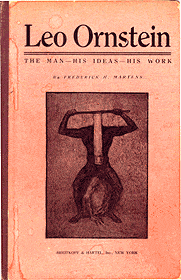
When, I was about age ten, someone asked me whether I didn’t wish to follow in my father’s footsteps, I replied that piano-playing was ‘sissy stuff’ – not for someone who had more manly pursuits in mind! It was not until I was in high school that I began to realise that music had been flourishing in the underground of my soul and was now starting to emerge into the outside world. I began toying with playing the piano myself. Years before, I had been given a few lessons by one of the teachers at what had become my parents’ Philadelphia music school, but at that stage I had been totally undisciplined – and probably undisciplinable. Now, however, on the verge of teenage romanticism, I decided that I wanted to learn to play the piano. I learned that the middle line of the treble clef was B and the middle line of the bass clef was D. Armed with that knowledge and a rudimentary set of characters (sharps, flats and the like), I set about teaching myself to play. The works that I chose to commence with are perhaps startling – the Chopin A flat Ballade and Beethoven Opus 111: things that I knew and loved. Undaunted, because I didn’t know better, I began unravelling these works, guided as much by my ear as by the scores. And with a natural, though totally untrained, facility, I found that within a few weeks I could start to make some parts of these works come alive under my hands. Of course, I knew that to play properly one had to practise many hours a day, and this I proceeded to do, especially over the summer holidays.
I wasn’t particularly encouraged in my endeavours by my parents, although at one point I did overhear my father commenting quietly but admiringly to my mother on the fact that I had, all by myself, discovered the trick of practising successive hand-positions in order to master a succession of chords or an arpeggio. I was thrilled by this tacit recognition. For many years I played only classical works that I knew well from listening to my father practise them, but eventually I began to become interested in my father’s own compositions.
For many years I watched him struggle with capturing the music that flooded his head. He could play it in real time as it occurred to him – the connection between his brain and his hands being seemingly direct. I had heard him improvise long passages, but given the slow pace of actually writing music down, he tended to forget material before he could get it onto paper. He constantly struggled to remember material and how he had transitioned between sections. He was invariably convinced that the post hoc means he constructed were inferior to what had initially occurred to him that he could no longer remember.
Finding his previously powerful short-term memory starting to fail, he tried everything to assist the writing process, including a tape-recorder. I don’t believe it ever really worked, because backing-up to find material proved cumbersome, and overwriting would produce a hopeless hodge-podge of material from entirely separate working sessions. In lieu of the tape-recorder, he developed a personal shorthand inscrutable to anyone but himself that consisted of skeletal material sufficient to jar his memory. With my mother as his omnipresent scribe, they would work together to fill in the blanks until they arrived at a rough but complete version of the music. My mother would then make two clean copies, sending one to me and one to the archive of his music at the Yale University music library. For many years these copies collected in a file cabinet in our basement.
Listening to some of the tapes from their working sessions, I had found one set of material that contained a particularly appealing section. At that time I was starting to paw through the manuscripts in our basement, but my reading ability had never developed because for the most part I had previously been dealing with music the sound of which was already fixed in my head. In learning pieces I used the score only to fill in in details in what I already knew from the sound, and so looking through the pile of manuscripts for a particular section of audio material from the tapes was much like looking for the proverbial needle in a haystack. Nonetheless, one day when I was examining the manuscripts, I came upon some music that I recognised as associated with the long-sought tunes nearby on the tape. Excitedly I worked my way through the manuscript until there on page four I came upon the very music I had long been seeking. I immediately set about learning the section that had so engaged my attention, and eventually learned the entire piece – which had been given the title A Long-Remembered Sorrow. My rendition of the piece can be found here.
As evidenced from the tapes, my father often had a difficult time choosing among various alternatives that occurred to him. In listening to the tapes of the composing sessions in which he was working on A Long-Remembered Sorrow, one can hear him trying out various paths through the maze of possibilities – interwoven with material from altogether different sessions and different pieces.
In the early days of his career, long before I was born, he had been very much in the public eye, and his compositions were published as soon as he wrote them. However, he was always ambivalent about public life – wanting audiences to know and love his music but being unwilling to continue to act as publicist for his own compositions. And so after he secluded himself from public view, interest in his music inevitably waned, and his compositions were no longer published. Nonetheless, the impetus to write continued unabated and even intensified once he stopped teaching – and so the manuscripts continued to arrive sporadically or sometimes in bursts, filling the file cabinet in our basement.
In 1980, toward the end of my computing career, I supervised and worked with a very bright MIT graduate student in the construction of a computer programme (Mockingbird) that we hoped would help composers to notate their compositions. It was the first computer screen-based music-scoring programme, and was made possible by the existence, at the Xerox Palo Alto Research Center (PARC) where we worked, of the first computers with the necessary capabilities. (You’ll find a lecture I co-presented, c. 1980, on YouTube, here.) That was before midi had been defined, so that we had to invent the equivalent, doctor a synthesiser and build a special interface to connect it to the computer. The system we ended up with produced a piano-roll-like representation of whatever was played on the synthesiser keyboard, and software tools could then be used by the composer to transform that primitive form into standard music notation by superimposing the necessary structural notational devices on the piano-roll material. And, of course, we needed to include the capability of editing and inserting new material using the computer keyboard and mouse.
When I decided to retire in 1984, I wasn’t sure what to do next. Our work with ‘Computer Professionals for Social Responsibility’ (a nationwide organisation we had founded in 1980 concerned about the threat of nuclear war) was already starting to wind down and for all practical purposes would end with the fall of the Berlin Wall a few years later.
I have a decent musical ear, and loved what I knew of my father’s music, but I am completely untrained musically, and although I had become a moderately decent amateur pianist, my sight-reading ability was all but non-existent, and so I memorised everything I played. Perusing the manuscripts was therefore not going to be helpful. Nonetheless from the few things I could hear, from his occasionally playing for me pieces he was writing or had just finished, and from hearing and listening to tapes of his working sessions, I concluded that I was sitting on a musical goldmine. Although I was utterly unqualified to try to deal with the pile of manuscripts with which I was confronted, it was clear that no one else was going to step forward to deal with any of it. And so, feeling that it was essential to preserve the music, I decided to undertake the task of turning the manuscripts into readable scores. Since so much of his music consisted of piano pieces, for the first several years (of what turned out to be a decade of work) I limited myself to them.
The first few scores were produced using our Mockingbird programme and provided excellent testing for it. Providentially, just at that point my father agreed to finish a piece he was working on (it ultimately grew into his Seventh Piano Sonata) for a concert by the San Francisco Contemporary Music Players. By that time my mother was gone, and the manuscript I had to work from was in his own, by then shaky, hand. It was far too illegible to be played from the manuscript, even had a skilled reader been at hand, and so I entered the music note-by-note into Mockingbird, using the computer keyboard and mouse. I could then listen to it played from the computer score by the synthesiser in order to spot obvious errors. As he completed each section, he mailed the manuscript to me. I entered it into our system, and returned the printed score to him. He then corrected it and returned it to me. I corrected the computer score, printed it and passed it along to the pianist who was learning the piece bit by bit in this fashion. The final section got to him only two weeks before the performance. Fortunately, he was a quick study!
As I was retiring at that point, I was about to lose access to the Mockingbird system which worked only on Xerox’s unique research computers. Luckily, by then commercial score-processing programmes that ran on the world’s rapidly proliferating personal computers had started appearing. The one I chose, Notewriter, made no real attempt to use piano keyboard input as Mockingbird had, but instead used computer keyboard and mouse to enter material, treating it in strictly graphical terms. Notewriter made no attempt to understand the musical structure, which was vital in dealing with music such as my father’s that didn’t always follow simple structural rules. (Other programmes, such as Finale,did expect music to follow fixed rules and were, at that time, unable to deal with music where the notation stretched the rules – even with something as simple as n-tuplets of arbitrary numbers of notes per beat.)
Looking over the multiple manuscripts in our basement, I was confronted with a rather disorganised pile of material. I also had a listing of the holdings at Yale, which didn’t match my collection. I therefore went to Yale and ultimately put together a complete list and a collection of all the piano pieces held in the two places. Taking my clue from Köchel, though without the sort of scholarly musical understanding that would have been helpful, I imposed a semblance of order, by assigning a unique S-number to each work. My groupings had some logic, but was was sometimes misbegotten. For example, some of the pieces were marked as waltzes and I naively decided that 3/4 time would qualify others as ‘waltzes’ as well – not stopping to consider that it actually takes more than 3/4 time to make a waltz. I ended up with a residue of pieces that didn’t fit into any of the categories I had defined, so I called my father and asked him what I should call them. After a moment’s thought, he replied ‘Metaphors’, and so the sixteen Metaphors were called into existence, completing my sorting process.
I then got to work got to work transcribing the manuscripts. As the work proceeded, I enlisted help wherever I could from musicians who could read the scores I produced and thus help to spot errors. As an outstanding example, when Marc-André Hamelin recorded the Eighth Sonata,33 he provided me with a frighteningly long list of corrections, which I then incorporated into the score.
In transcribing the manuscripts, I did as well as a non-musician with a decent ear could. I had to do occasional inferring. I knew my father well enough to realise that I’d not get any help from him, even though he was still alive. He was still writing and wasn’t interested in completed works. It might be fair to say that he left far too much for others to do, but his sole interest seemed to be in divesting himself of whatever music was hounding him at the moment. Once it was down on paper, he was on to the next thing and wasn’t interested in looking back. Tempos and other performance markings were only sometimes indicated – an omission that he excused by suggesting that anyone who didn’t understand the music well enough to know what was appropriate should probably not be attempting to play it! When I played one of the movements of his Fourth Sonata for him, the kindest thing he could think to say was: ‘I suppose you could think of it that way’. Another time when I played one of his Fantasies, he emerged from the adjacent room saying ‘Sounds like Ornstein’. I’m sure he’d altogether forgotten he’d written it. When his Nocturne and Dance was recorded, he couldn’t resist listening to it, and was totally captivated. But shortly he said: ‘I must never do that again’. It had completely blocked anything new from entering his head for days afterwards.
I was conscious that my editions would be viewed as authentic, and so I tried to be as careful as possible and in only one or two instances did I have to do any deliberate modest editing beyond correcting obvious typographical errors. Inevitably, despite my best efforts, such errors have indeed shown up in the scores, and can no longer be corrected, since the Notewriter programme has evolved so that the original Notewriter source files for the scores are no longer usable. Fortunately, I converted all of the score files to PDF form, which is used sufficiently universally that it seems unlikely to go out of existence anytime soon.
After some ten years of work, all 1,700 pages of piano music were finished, and I embarked on chamber and vocal works, getting some assistance from others who volunteered to help. By then computer-based scores were becoming available on the web, and so, with the help of my son, we put together a website devoted to my father’s music: http://poonhill.com or http://leoornstein.net. Initially it contained only printable scores and some biographical material, but we later added audio and discography sections. Finally, today, a good deal of his music is available on YouTube, some of it put there by me, but much of it by other individuals who have discovered and played his music.
In retrospect, I’m glad that through my work I was able to help put his music back on the map. Its progress from initial sets of printed volumes to the present website has made the scores available today to anyone with a computer.
Leo Ornstein Recordings on Toccata Classics
- Frederick H. Martens, Leo Ornstein: The Man, His Ideas, His Work, Breitkopf & Härtel, New York, 1918. ↩︎
- Broyles, Michael, and Denise Von Glahn, Leo Ornstein: Modernist Dilemmas, Personal Choices,: Indiana University Press, Bloomington, 2007. ↩︎
- Released on Hyperion CDA67320 in 2002 – with the booklet text written by one Martin Anderson. ↩︎
